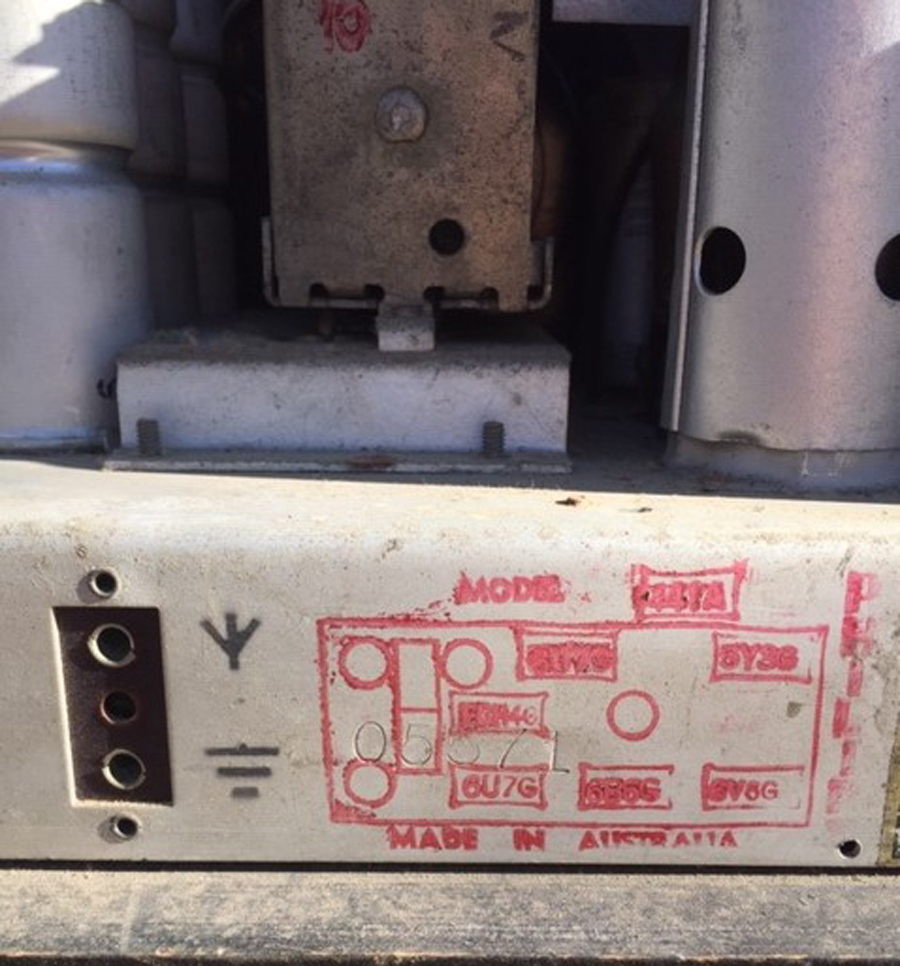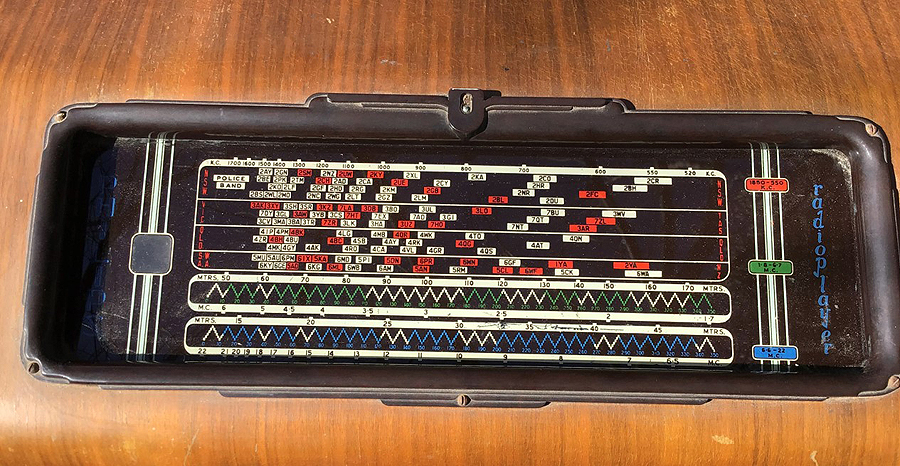Tech Talk
Forum home - Go back to Tech talk
|
Philips Radioplayer 05571
|
|
|
Return to top of page · Post #: 1 · Written at 7:46:32 PM on 5 July 2020.
|
|
|
|
Location: Darlington, WA
Member since 30 March 2016 Member #: 1897 Postcount: 193 |
|
Hi All,   |
|
|
Return to top of page · Post #: 2 · Written at 7:59:15 PM on 5 July 2020.
|
|
|
|
Administrator
Location: Naremburn, NSW
Member since 15 November 2005 Member #: 1 Postcount: 7577 |
|
Photos uploaded. ‾‾‾‾‾‾‾‾‾‾‾‾‾‾‾‾‾‾‾‾‾‾‾‾‾‾‾‾‾‾‾‾‾‾‾‾‾‾‾‾‾‾‾‾‾‾‾‾‾‾‾‾‾‾‾‾‾‾‾‾‾‾‾‾‾‾‾‾ A valve a day keeps the transistor away... |
|
|
Return to top of page · Post #: 3 · Written at 8:58:20 PM on 5 July 2020.
|
|
|
|
Location: Melbourne, VIC
Member since 20 September 2011 Member #: 1009 Postcount: 1257 |
|
It is a model 441A. It has six valves + a magic eye & a R.F. stage. Still interested in taking it on?!! |
|
|
Return to top of page · Post #: 4 · Written at 9:30:57 PM on 5 July 2020.
|
|
|
|
Location: Wangaratta, VIC
Member since 21 February 2009 Member #: 438 Postcount: 5646 |
|
Keep an eye out with the power transformer. I have seen several with a flaky black tar paper from which windings escape out the side. I have a 132L that is one where that has happened. |
|
|
Return to top of page · Post #: 5 · Written at 9:16:45 AM on 6 July 2020.
|
|
|
|
Location: Darlington, WA
Member since 30 March 2016 Member #: 1897 Postcount: 193 |
|
Marc, |
|
|
Return to top of page · Post #: 6 · Written at 9:47:47 AM on 6 July 2020.
|
|
|
|
Location: Hill Top, NSW
Member since 18 September 2015 Member #: 1801 Postcount: 2230 |
|
I have a couple of Philips radios with the zigzag lines like yours. I don't know where they were made. |
|
|
Return to top of page · Post #: 7 · Written at 10:08:02 AM on 6 July 2020.
|
|
|
|
Location: Wangaratta, VIC
Member since 21 February 2009 Member #: 438 Postcount: 5646 |
|
The circuit in AORSM is fairly tatty Radio Museum looks like the better one to download. The resistor on the tuning indicator is rarely good as are the grid resistors on 6V6 and the plate resistors on the first audio; Across the board in all brands they are never to be left unchecked. |
|
|
Return to top of page · Post #: 8 · Written at 5:37:21 PM on 6 July 2020.
|
|
|
|
Location: Darlington, WA
Member since 30 March 2016 Member #: 1897 Postcount: 193 |
|
Hi Monochrome TV, |
|
|
Return to top of page · Post #: 9 · Written at 6:07:45 PM on 6 July 2020.
|
|
|
|
Location: Melbourne, VIC
Member since 20 September 2011 Member #: 1009 Postcount: 1257 |
|
Valve line up is 6U7G, ECH4G, 6U7G, 6B6G, 6V6G, 5Y3G & there is a valve layout diagram. |
|
|
Return to top of page · Post #: 10 · Written at 7:18:24 PM on 6 July 2020.
|
|
|
|
Location: Darlington, WA
Member since 30 March 2016 Member #: 1897 Postcount: 193 |
|
Monochrome TV, |
|
|
Return to top of page · Post #: 11 · Written at 7:48:59 PM on 6 July 2020.
|
|
|
|
Location: Melbourne, VIC
Member since 20 September 2011 Member #: 1009 Postcount: 1257 |
|
Yes that is correct: |
|
|
Return to top of page · Post #: 12 · Written at 10:48:15 PM on 6 July 2020.
|
|
|
|
Location: Wangaratta, VIC
Member since 21 February 2009 Member #: 438 Postcount: 5646 |
|
Fairly standard arrangement. |
|
|
Return to top of page · Post #: 13 · Written at 10:17:14 PM on 7 July 2020.
|
|
|
|
Administrator
Location: Naremburn, NSW
Member since 15 November 2005 Member #: 1 Postcount: 7577 |
|
Documents uploaded to Post 11. ‾‾‾‾‾‾‾‾‾‾‾‾‾‾‾‾‾‾‾‾‾‾‾‾‾‾‾‾‾‾‾‾‾‾‾‾‾‾‾‾‾‾‾‾‾‾‾‾‾‾‾‾‾‾‾‾‾‾‾‾‾‾‾‾‾‾‾‾ A valve a day keeps the transistor away... |
|
|
Return to top of page · Post #: 14 · Written at 7:15:42 AM on 8 July 2020.
|
|
|
|
Location: Toongabbie, NSW
Member since 19 November 2015 Member #: 1828 Postcount: 1385 |
|
Hi Lindsay, your set looked familiar to me. |
|
|
Return to top of page · Post #: 15 · Written at 9:34:08 AM on 8 July 2020.
|
|
|
|
Location: Darlington, WA
Member since 30 March 2016 Member #: 1897 Postcount: 193 |
|
Thanks Fred and others for the info supply. |
|
|
You need to be a member to post comments on this forum.
|
|

Sign In

Vintage Radio and Television is proudly brought to you by an era where things were built with pride and made to last.
DISCLAIMER: Valve radios and televisions contain voltages that can deliver lethal shocks. You should not attempt to work on a valve radio or other electrical appliances unless you know exactly what you are doing and have gained some experience with electronics and working around high voltages. The owner, administrators and staff of Vintage Radio & Television will accept no liability for any damage, injury or loss of life that comes as a result of your use or mis-use of information on this website. Please read our Safety Warning before using this website.
WARNING: Under no circumstances should you ever apply power to a vintage radio, television or other electrical appliance you have acquired without first having it checked and serviced by an experienced person. Also, at no time should any appliance be connected to an electricity supply if the power cord is damaged. If in doubt, do not apply power.
Shintara - Keepin' It Real · VileSilencer - Maintain The Rage
